How to Plan the Perfect Delhi to Manali Road Trip
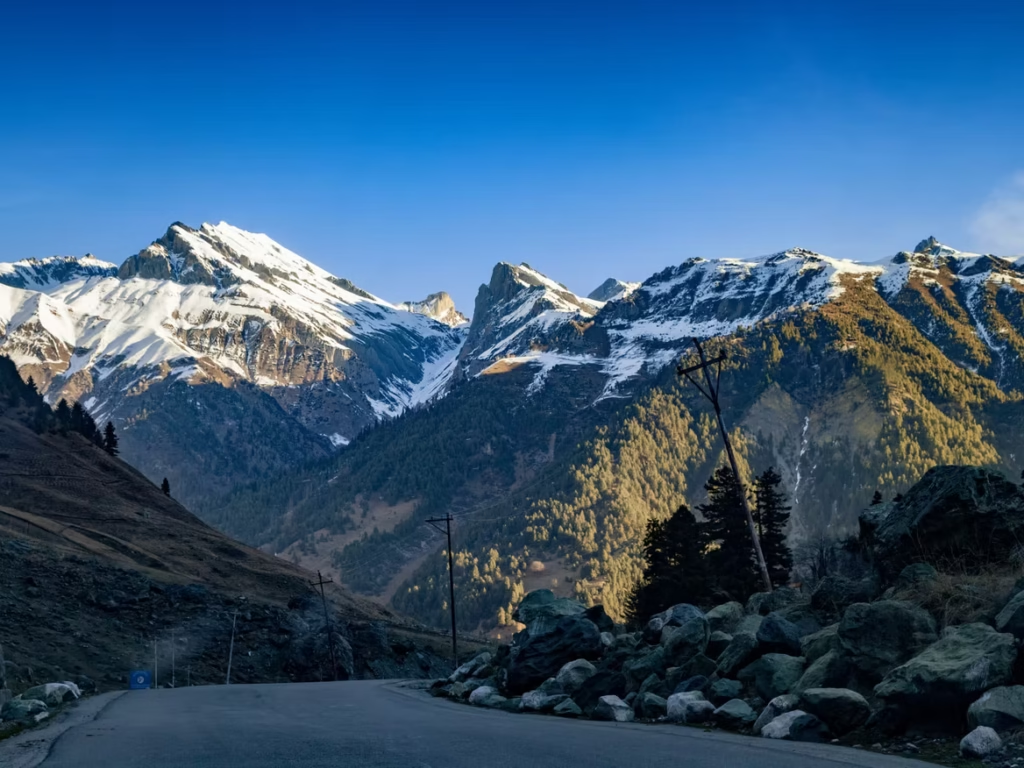
The road trip from Delhi to Manali is one of the best adventures in India. Imagine cruising along the winding highways with the towering Himalayas surrounding you; stopping at small dhabas for warm, buttery parathas; and opening the windows to let in the crisp mountain breeze. This isn’t just a drive, it’s an experience encompassing food, history, culture, and visually stunning landscapes. The distance from Delhi to Manali is about 470 km and can take anywhere between 10-12 hours. You will pass through picturesque towns in Himachal, see historic temples, and drive through scenic valleys. Smart planning will allow you to craft your Delhi to Manali itinerary into either an adventure packed with thrill or a well-deserved retreat. This guide outlines the best routes, breaks, packing advice, and safety tips for a road trip filled with beautiful scenery, food, and long-lasting memories. What’s in this blog Why Take a Road Trip from Delhi to Manali? Best Time to Travel Planning Your Route Packing and Preparing for the Trip Best Places and Stops on the Way Suggested Delhi to Manali Road Trip Itinerary Travel Essentials and Safety Tips Where to Stay Along the Route Why Plan with The Tarzan Way FAQs Final Thoughts Why Take a Road Trip from Delhi to Manali? Manali is one of the most loved hill stations in India; however, the adventure begins long before you reach the destination. If you drive from Delhi, you get to experience Scenic diversity – You go from Delhi with all its chaos, to flat farmland in Haryana and Chandigarh’s gardens to the mountains of Himachal. Freedom & flexibility – Stop where you want, eat the food that tempts you, and detour into remote villages. Unforgettable bonding – Long drives mean stories, laughter, memories, and experiences with your fellow travelers. Adventure factor – Hairpin bends, high passes, and spontaneous pitstops mean that the journey is as thrilling as the destination. Unlike a short easy flight, the road allows you to slow down and truly feel the spirit of Himachal. Best Time to Travel Timing really can impact your smooth roadway trip from Delhi to Manali. March–June – Great weather to experience and do fun activities. July–August – Torrential rains make the roads slippery and prone to landslides. No bueno. September–November – The weather is crisp, the air is clear and the crowd is smaller. December–February – A beautiful blanket of snow, but riskier driving option because of icy roads. If this is your first trip, I’d recommend a trip in March–June or September–November for a safer and comfortable trip. Planning Your Route The distance from Delhi to Manali is about 470 km, which can take 10-12 hours for a direct route. But the best part of this trip is to part it into a leisurely 3-5 days where you can visit towns along the way. Common Route Delhi → Murthal → Panipat → Ambala → Chandigarh → Bilaspur → Mandi → Kullu → Manali Suggested Stopovers Murthal – well known for parathas, and dhaba culture. Chandigarh – well known for architecture, gardens and museums. Kalka & Solan – great hillside views. Kullu – with apple orchards, temples, and river rafting. You will get the most food, culture, and relaxation on your trip by having 2-3 stopovers. Packing and Preparing for the Trip Packing smart makes the difference between a nice road trip and a stressful one. Things to consider: Clothes – lightweight cottons for the daytime, heavier jackets for the evening. Travel gear – sunglasses, hats, power banks for the trip, and car chargers. Snacks – buy dry fruits, sandwiches, some chips, and lots of water. Medical kit – buy basic medicines, motion sickness tablets, and band-aids. Car supplies – spare tyre, basic toolkit, torchlights, and extra fuel cans. Pro Travel Tips: Servicing of your car should be done one week prior to your trip (e.g. battery check, brakes check, and tyres check). Make sure to create playlists for the length of your trip, to keep your spirits high on longer stretches. Assign roles in the planning. Having a navigator, photographer and DJ will engage everyone. Best Places and Stops on the Way There are so many stops you can make while driving along the Delhi-Manali Highway. It’s full of places you will want to stop over! In and Around Delhi Sadar Bazaar – chaotic, colorful, and full of tasty street food. Chole Bhature breakfast – a classic North Indian kickstart. Murthal (NH44) Renowned for giant stuffed parathas with butter and lassi. Kurukshetra & Panchkula Kurukshetra temples – deep dive into India’s mythology. Nada Sahib Gurudwara – a peaceful spiritual stop. Chandigarh Explore the Rock Garden, Rose Garden, and museums. Perfect place for an overnight halt. Shimla & Kasauli (Optional detour) Colonial architecture, Mall Road, toy train rides. Approaching Manali Kullu – apple orchards, rafting in Beas River, temples. Solang Valley – adventure hub for paragliding and skiing. Rohtang Pass – if open, this snow paradise is a must-visit. In Manali Stroll along Mall Road. Visit Hidimba Devi Temple. Cozy up in local cafes with mountain views. Suggested Delhi to Manali Road Trip Itinerary Here’s a basic 5-day road trip plan: Day 1: Delhi → Chandigarh (250 km, approx. 5–6 hour drive). After a day of visiting Chandigarh’s gardens, stay overnight at a hotel. Day 2: Chandigarh → Shimla/Kasauli (90-120 km, approx. 3-4 hour drive). Explore Shimla or Kasauli with their beautiful hills and colonial architecture; stay overnight. Day 3: Shimla/Kasauli → Mandi/Kullu (180 km, 6–7 hour drive). See the beautiful scenic drives, apple orchards, and temples on this drive and stay overnight. Day 4: Kullu → Manali (40 km; 2 hour drive). Arrive in Manali; spend the day exploring Mall Road and Hidimba Temple. You can stay here two nights – the accommodation options are plentiful. Day 5: Around Manali → Take day trips from Manali to Solang Valley or Rohtang Pass (if open). Either way, there will be wonderful scenery and adventure. This trip can be done in
Top Budget Hotels in Manali for a Mountain Getaway
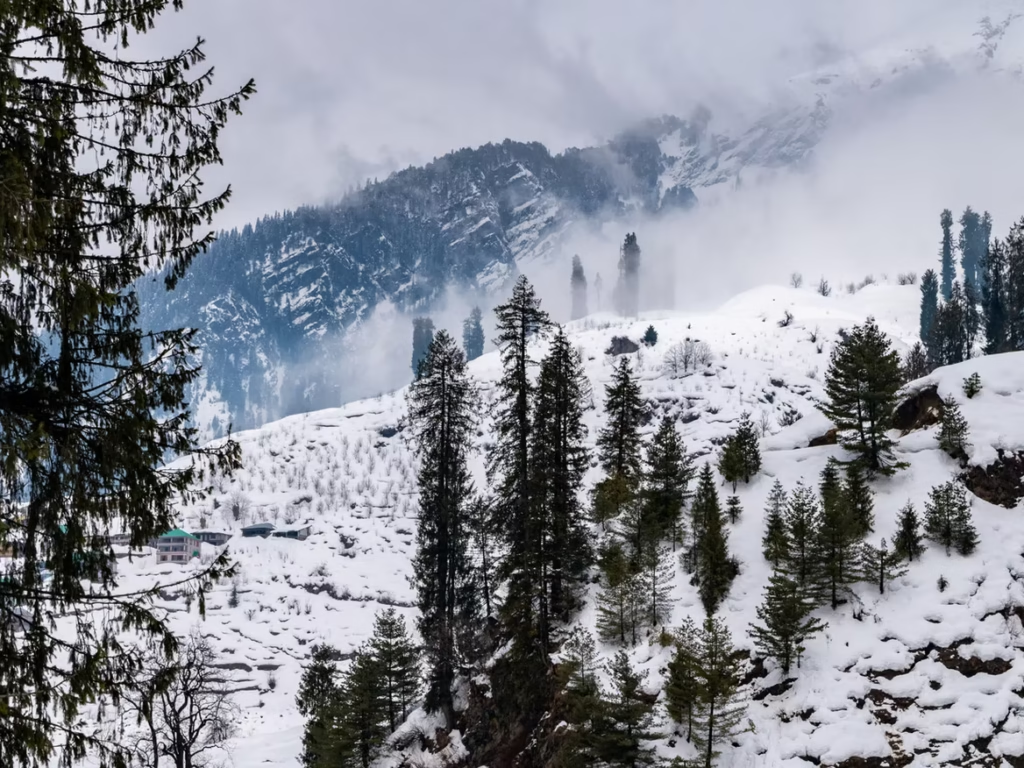
Manali has always been a destination for travelers who love the beauty of the Himalayas. Snow-capped mountains, lush valleys, pine trees, and the Beas River create the perfect picture. But here’s the best thing: you can enjoy this beauty on a budget. There are several top-rated hotels in Manali for a mountain vacation that are affordable with amazing comfort, good eating options, and welcoming hospitality – for a reasonable prize! So, whether you are traveling solo, with friends, a family trip, or on your honeymoon, there is a great blend of affordable stay in Manali. In this blog, we will share some of the best budget hotels in Manali near Mall Road, budget places to stay in peace of mind, and other awesome backpacker hostels. Plan your trip with The Tarzan Way. What’s in this Blog? Why Choose Budget Hotels in Manali? The Orchard Greens Hotel Hotel Snow Valley Resort Zostel Manali Hotel Tibetan Classic Johnson Lodge Manali Tips to Choose the Best Budget Hotels in Manali Why Stay Near Mall Road? Using The Tarzan Way for Smarter Travel Planning FAQs Final Thoughts Why Choose Budget Hotels in Manali? Budget travel is not synonymous with compromised quality. As a matter of fact, most of the negatively reviewed budget hotels to stay in Manali have: Ideal locations – close to Mall Road, Hadimba Temple, and sleepy away from the hustle and bustle are some of the loveliest villages in Manali as Vashisht. Modern amenities – including Wi-Fi, room service, and travel assistance. Quality food – Indian cuisine, Tibetan food including momos and thukpa. More than this, the chances to experience the local activities – including treks, temples and adventure sports available in Manali like paragliding, and rafting. Budget hotels to stay in Manali that families, couples and backpackers take, about their family trips, or honeymoons, budget accommodation is an updated way to experience the magic of the mountains at 50% off. The Orchard Greens Hotel If you’re searching for Manali budget hotels near Mall Road, The Orchard Greens Hotel tops the list. Location: Just minutes away from Hadimba Temple and Manu Temple. Room Rates: From ₹1360 per night. Amenities: Free Wi-Fi, LCD TVs, attached bathrooms, travel desk, fitness center, and a rooftop with breathtaking views. Why Stay Here? Central location makes it easy for couples and small families to explore the town. Hotel Snow Valley Resort Looking for top budget hotels in Manali for a mountain getaway for family? Hotel Snow Valley Resort offers peace and rejuvenation. Location: Nestled in Old Manali, surrounded by gardens and quiet trails. Room Rates: From ₹1500 per night. Unique Features: Floor-to-ceiling windows, yoga sessions, massages, vegetarian meals, and shuttle service to Mall Road. Nearby Adventures: River rafting in the Beas River and paragliding flights. Zostel Manali No list of best budget hotels in Manali is complete without mentioning Zostel – a favorite among backpackers. Location: Near Mall Road and also in Old Manali, Vashisht, Burwa, Pangan, and Dhobi. Room Rates: Beds from just ₹500 per night. Vibe: Colorful dorms, lively common spaces, terrace café, games, and karaoke nights. What’s Special: Free kitchen access, budget-friendly stays, and the chance to connect with travelers worldwide. Hotel Tibetan Classic For travelers wanting something culturally immersive, Hotel Tibetan Classic is an amazing choice. Location: The peaceful village of Vashisht. Room Rates: From ₹1500 per night. Ambience: Ladakhi-style interiors, woodwork, Buddhist murals, and garden café with mountain views. Special Experiences: Butter tea, Tibetan cuisine (momos, thukpa), wellness sessions, and massages. Johnson Lodge Manali One of the best budget hotels in Manali near Mall Road, Johnson Lodge blends comfort with affordability. Location: Central Manali, walking distance to Mall Road. Room Rates: From ₹1000 per night. Amenities: Complimentary breakfast, Wi-Fi, safety lockers, laundry, and a restaurant serving Indian & continental dishes. Why Stay Here? A convenient base for sightseeing while still enjoying a cozy retreat. Tips to Choose the Best Budget Hotels in Manali For Families: Look for budget hotels in Manali for family that provide larger rooms, safety, and kid-friendly food options. For Honeymooners: Choose the best budget hotels in Manali for honeymoon with scenic views and privacy. For Backpackers: Go for dorm-style hostels like Zostel to save money for activities. Near Mall Road: The best budget hotels in Manali near Mall Road are convenient for shopping, food, and nightlife. Cultural Stays: Try unique stays like dharamshala in Manali for stay to experience spirituality and culture. Why Stay Near Mall Road? Staying near Mall Road gives you easy access to: Street shopping for woolens and handicrafts. Local eateries and cafés. Quick access to taxis and bus stands. Proximity to tourist spots like Hadimba Temple. Using The Tarzan Way for Smarter Travel Planning Choosing where to stay in Manali can be overwhelming with so many options. That’s where The Tarzan Way makes a difference. Get personalized hotel recommendations. Build your own custom itinerary. Balance your budget with comfort. If you’re planning longer adventures, check out: Manali to Leh: The Ultimate High-Altitude Road Trip in India The Ultimate Manali Experience: Nature, Adventure, and Culture Exploring the Mountains: A Guide to the Main Attractions Along the Shimla-Manali Highway How to Plan the Perfect Delhi to Manali Road Trip The Ultimate Manali Travel Guide: How to reach and get around the mountain town With The Tarzan Way, you don’t just book hotels—you design your mountain getaway smarter. FAQs 1. Which are the top budget hotels in Manali for a mountain getaway? Some of the best include The Orchard Greens Hotel, Hotel Snow Valley Resort, Johnson Lodge, Hotel Tibetan Classic, and Zostel Manali. 2. What are the best budget hotels in Manali near Mall Road? Johnson Lodge and The Orchard Greens Hotel are excellent choices near Mall Road. 3. Are there budget hotels in Manali for family trips? Yes, Hotel Snow Valley Resort and The Orchard Greens Hotel are great for families. 4. Which are the best budget hotels in Manali for honeymoon couples? Hotel Tibetan Classic in Vashisht and Hotel Snow Valley Resort
Planning a Trip to Manali this Summer? Here’s What You Need to Know About the Weather
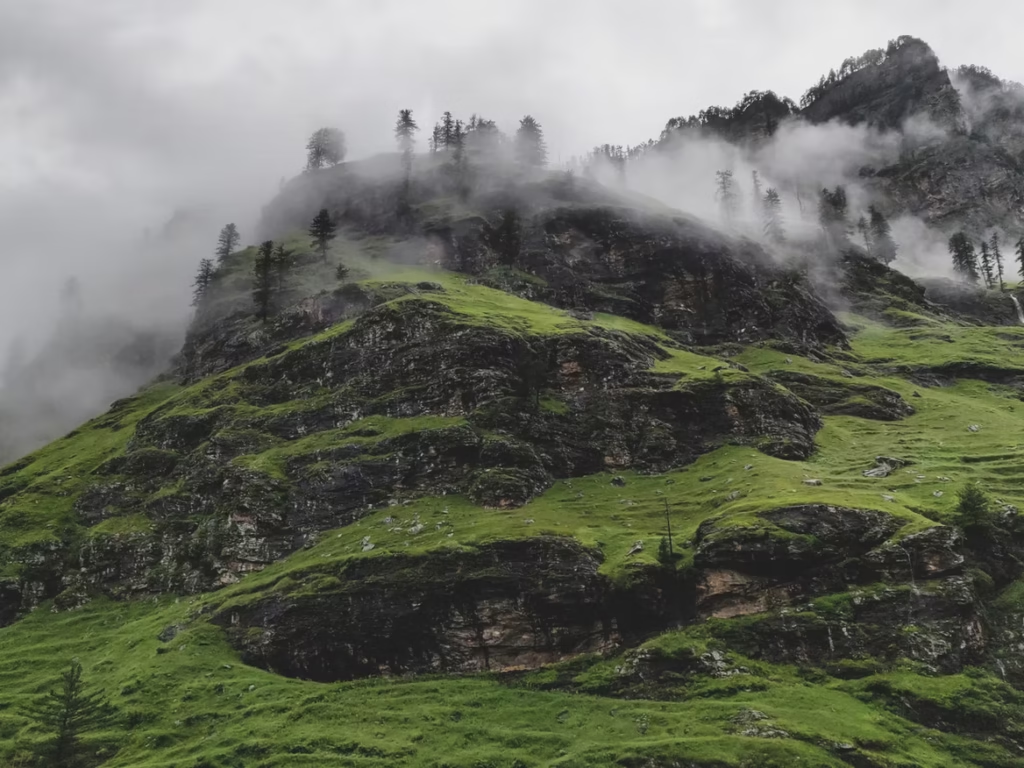
Tucked away in the Himalayas, Manali is one of the most popular summer getaways for Indians. When the plains heat up, this hill town is cool relief and a mix of scenic beauty and adventure. During the summer, you should expect anything from sunny mornings to misty rains to thunderstorms at any given moment.With a bit of planning, you can still get the most out of your Manali trip. This guide will tell you everything you need to know about Manali weather, including temperatures, rainfall amounts, what to pack, things to do in Manali by season, and the best time to visit Manali so that you can enjoy your holiday rain or shine. You can also plan your trip to Manali with The Tarzan Way. What’s in this blog Manali Weather: An Overview Manali in Summer (April–June) Manali in Monsoon (July–September) Manali in Winter (December–February) Manali in Spring (March–April) Best Time to Visit Manali What to Pack for Your Trip Things to Do in Manali by Season Suggested Itinerary for Manali FAQs Final Thoughts Manali Weather: An Overview At an altitude of nearly 2,050 meters, the weather in Manali can be dramatically different from season to season. Summertime may bring comfortable temperatures between 15°C and 25°C, but the high altitude makes the sun feel stronger. The monsoon usually starts at the end of June, with sudden showers. This unpredictable Manali weather means travelers must pack efficiently during the summer—they should carry light clothes for hot sunny days, a jacket for breezy evenings, and an umbrella for unexpected showers. Manali in Summer (April–June) Visiting Manali in summer is the most popular choice. Daytime temperatures are pleasant (15–25°C), perfect for an outdoor getaway. Humidity starts creeping in by May, but monsoon hasn’t fully arrived. Pros: Clear skies and mountain views. Ideal for trekking, paragliding, rafting, and camping. Cafes and markets are lively for food and shopping. Cons: Rain may arrive by late June. Rohtang Pass might still be closed in early April. Planning a road trip? Read: How to Plan the Perfect Delhi to Manali Road Trip. Manali in Monsoon (July–September) The monsoon season creates a verdant green paradise in Manali, but it also brings heavy rainfall that influences travel accessibility. Humidity will be high at levels between 75%–80% and landslides may occur frequently. Pros: Fewer travellers and hotel prices are discounted. Rivers and waterfalls could be flowing at their most spectacular. Great time for budget travelers. Cons: The roads may be prone to landslides and blockages. Outdoor adventure activities will be limited. Fog could obscure views. Want more? Check out our Manali Travel Guide for some safety tips during the monsoon season. Manali in Winter (December–February) In winter, Manali becomes an enchanting snow-laden land. The temperature fluctuates from -5°C during the night to 10°C in the day. Pros: Skiing, snowboarding, and snowmobiling at the Solang Valley. Fewer tourists, and appealing hotel offers. Charming sceneries with snow-clad mountains. Cons: Heavy snow can make the roads impassable. Limited connectivity to remote areas. Very cold and necessitate heavy winter wear. Manali in Spring (March–April) Spring brings moderate weather with highs of 18°C to 25°C, but evenings can still be chilly. Expect light showers and even snow at higher altitudes. Pros: Blooming orchards and colorful valleys. Off-season discounts on hotels. Ideal time for temple visits and easy treks. Cons: Sudden rain or snow at higher points. Some activities remain closed until summer. Best Time to Visit Manali The “best” time depends on your travel style: Summer (April–June): Adventure activities, family trips. Monsoon (July–September): Budget-friendly, lush scenery. Winter (December–February): Snow sports and cozy retreats. Spring (March–April): Flowering orchards, festivals, and fewer crowds. Planning a romantic escape? Check out our Manali Honeymoon Guide. What to Pack for Your Trip Summer: Light cottons, hats, sunscreen, trekking shoes, and a light jacket for evenings. Monsoon: Raincoat, umbrella, waterproof boots, quick-dry clothing. Winter: Heavy woolens, thermals, snow boots, gloves, moisturizers. Spring: Layered clothing, compact umbrella, light sweaters for evenings. Tip: Always carry a basic medical kit and reusable water bottles. Things to Do in Manali by Season Summer (April–June): Paragliding at Solang Valley, rafting in the Beas River, trekking (Hampta Pass, Bhrigu Lake), riverside camping. Monsoon (July–September): Temple visits (Hadimba, Vashisht), cozy cafes, local food, indoor relaxation. Winter (December–February): Skiing, snowboarding, sledding, zorbing, trekking (Chadar trek for experts). Spring (March–April): Nature walks, birdwatching, apple orchards, temple visits, cultural festivals. These activities highlight some of the best things to do in Manali no matter when you visit. Suggested Itinerary for Manali (4 Days) Day 1: Explore Mall Road and Hadimba Temple. Day 2: Adventure sports in Solang Valley. Day 3: Visit Naggar Castle, Vashisht hot springs, and Old Manali cafes. Day 4: Optional trip to Rohtang Pass (if open) or explore Kullu. This plan covers top places to visit in Manali, giving you a balanced mix of adventure and relaxation. FAQs Q. Is Manali hot in summer? No, summers are cool with 15°C–25°C temperatures, perfect for sightseeing. Q. Does it rain in Manali in June? Yes, occasional showers start by late June as monsoon approaches. Q. Which month is best for Manali? April–June for adventure, December–February for snow. Q. Is May good for Manali? Yes, sunny days, pleasant evenings, and open adventure activities. Q. Does Manali get snow in summer? Not in town, but higher passes may still have snow till May. Q. Is Manali crowded in June? Yes, June sees peak tourist crowds before monsoon starts. Q. What to wear in Manali in May? Light cottons by day, a jacket for cool evenings. Q. Is Manali safe in July? July is monsoon season; heavy rains can disrupt travel. Q. Does it snow in Manali in December? Yes, December usually brings snowfall, especially after mid-month. Q. Is January a good time for Manali? Yes, but pack heavy woolens; expect snow and sub-zero nights. Q. How many days are enough for Manali? 3–4 days are enough for sightseeing, cafes, and adventure. Q. Is Rohtang open in June? Yes, Rohtang Pass usually
Goa Travel Itinerary: Must-Visit Spots & Hidden Gems
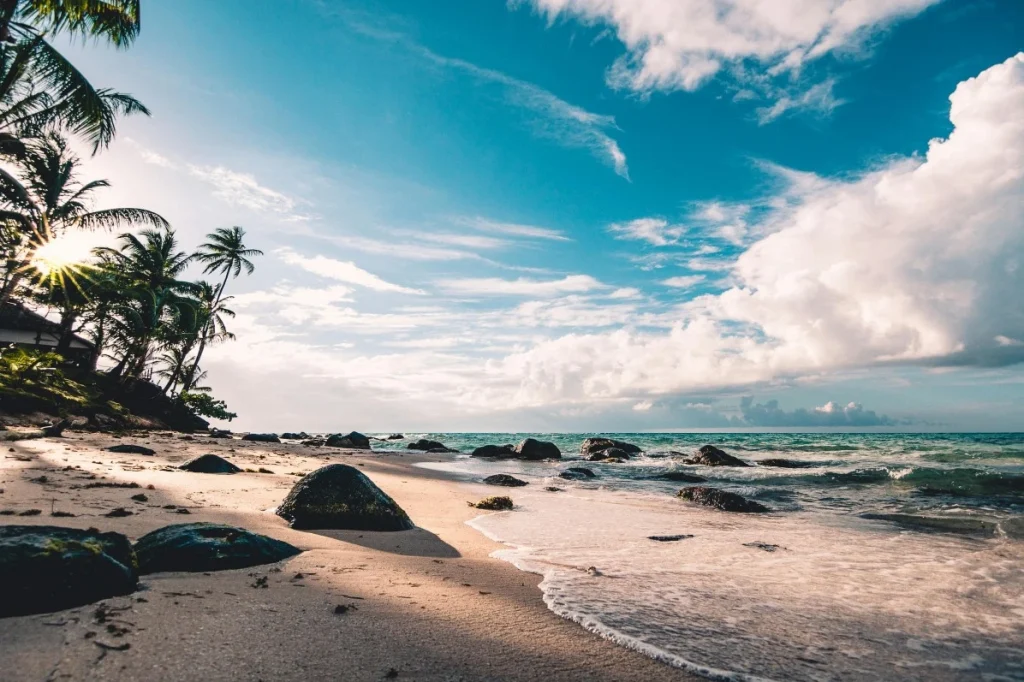
There’s something magnetic about Goa: its laid-back vibe, its breezy sea-salted mornings and lively evenings filled with music, laughter and dancing. For those who travel, Goa is more than a place. It is a feeling that looks different depending on how one engages with it. In this Goa itinerary, whether you’re planning a 1-3 day getaway or a full week of beach relaxation, we’ve pulled together the top highlights and some hidden gems locals enjoy. With a mix of nights out on the town and family-friendly beaches during the day, this itinerary finds the right balance between excitement and tranquility – just as it should be in Goa. If you would prefer a travel itinerary unique to your tastes, which circumvents the difficulties of planning and finding the perfect balance on your own, The Tarzan Way can plan your perfect Goa trip in minutes. North Goa – Where the Energy Never Sleeps Welcome to the lively half of Goa, where the roads buzz with scooters, beach bars shine with fairy lights, and music wafts through the night. North Goa is the place to begin – bold, crowded, and unapologetically alive. Must-Visit Spots: Calangute & Baga Beaches: The heartbeat of Goa tourism – perfect for water sports and beach parties. Fort Aguada: Catch golden sunsets and views stretching across the Arabian Sea. Anjuna Flea Market: Shop boho jewelry, handmade art, and souvenirs. Vagator & Chapora Fort: For those iconic cliff-top views featured in “Dil Chahta Hai.” Things to Do at Night: Party at Tito’s Lane or Curlies Beach Shack. Join a silent disco at Palolem or beach shacks along Anjuna. Explore local cafes that transform into cozy bars post-sunset. Pro Tip: If you’re looking for the convenience of walking to most nightlife options, stay close to Calangute or Baga. Book your stay early – budget accommodations come and go quickly in North Goa, especially on weekends and holidays. South Goa – For Serenity Seekers and Peace Lovers If, in North Goa, you have energy, in South Goa, you have balance – beaches lined with palms, morning yoga, and peaceful cafes with views of calm waters. This part of your trip to Goa feels like a refreshing breath after a prolonged song. Top Beaches: Palolem Beach: Great for kayaking, yoga, and relaxed evenings. Agonda Beach: Perfect for solitude and romantic sunsets. Butterfly Beach: Hidden and scenic – accessible by boat. Colva Beach: A mix of local life and scenic sands. Experiences You’ll Love: Morning dolphin tours and sunset cruises. Exploring Cabo de Rama Fort – one of the best Goa tourism places for views. Cafe-hopping in Patnem and Palolem for vegan and beachside brunches. Pro Tip: If you want to spend time in peace and silence, then visit South Goa during weekdays for the quietest experience. For a mix of luxury and affordability, try boutique Goa resorts near Agonda – they often come with private beach access. Hidden Gems Only Locals Know About Beyond the tourist maps of Goa, lay hidden treasures that frequent visitors may never see. These destinations will reveal the heart and soul of Goa – slow, simple, and breathtakingly beautiful. Hidden Beaches & Places: Kakolem (Tiger) Beach – Wild cliffs and pure privacy. Betul Beach – Delightfully small fishing village with an estuary. Hollant Beach – Tranquil bay for swimming and sunrises. Divar Island – Picturesque churches and colorful Portuguese houses. Netravali Waterfalls – Lush, jungle escape in South Goa. Why You Should Go: Excellent for nature photography. Ideal for travelers who prefer empty sand versus crowds. Peek into Goa’s traditional way of life. Pro Tip: Be sure to take cash with you while discovering the hidden beaches, because most stalls or taxis don’t have card machines. Always check tide timings if you’re heading to secluded coves. Beyond the Beaches – Goa’s Cultural & Heritage Side Goa’s charm isn’t just in its coastline – it’s in the music echoing from old churches, the bright Latin Quarter of Panjim, and the stories whispered by 400-year-old forts. Cultural Experiences to Try: Walk through Fontainhas – the Latin Quarter painted in blues and yellows. Visit Basilica of Bom Jesus and Se Cathedral – UNESCO heritage sites. Explore Reis Magos Fort for river views and history. Attend a local Goan music night in Panjim. Pro Tip: Early mornings are the best time to explore Old Goa – fewer crowds, softer light, and peaceful vibes for great photos. Where to Stay – Budget, Boutique & Beachside Bliss Whether you’re a backpacker or a comfort seeker, Goa offers stays that match every mood and budget. North Goa Stays: Budget-friendly hotels in North Goa (Calangute, Candolim, Baga). Ideal for partygoers and social travelers. South Goa Stays: Boutique villas and Goa resorts around Agonda or Palolem. Great for couples and families. Central Goa Stays: Panjim and Fontainhas – perfect for heritage lovers. If you’re planning a workation, browse through 13 Best Places to Have an Amazing Workation in Goa for the most scenic spots to mix work and leisure. Pro Tip: Book your stay near the area you plan to explore most – North for nightlife, South for peace. Many mid-range hotels offer discounts for stays longer than 5 nights. Sample 5-Day Goa Itinerary – Balanced & Breezy Day 1: Arrival + North Goa beaches (Calangute, Baga, Fort Aguada) Day 2: Anjuna Market + Chapora Fort + nightlife at Baga Day 3: Old Goa heritage sites + Fontainhas walk Day 4: Head to South Goa (Colva, Palolem, Cabo de Rama Fort) Day 5: Hidden beaches and cafe-hopping before departure For longer stays, check Goa Itinerary for 3, 5, and 7 Days for detailed route plans. Pro Tip: Keep your last day flexible – weather and beach vibes in Goa often tempt travelers to extend their stay. Goa Beyond the Sun – Food, People & Vibe No Goa travel guide is complete without talking about food. From beachside seafood shacks to local taverns serving spicy vindaloo, Goan cuisine reflects its mixed heritage. Must-Try Foods: Goan prawn
Kerala Trip Planner: Essential Tips for Your Dream Vacation
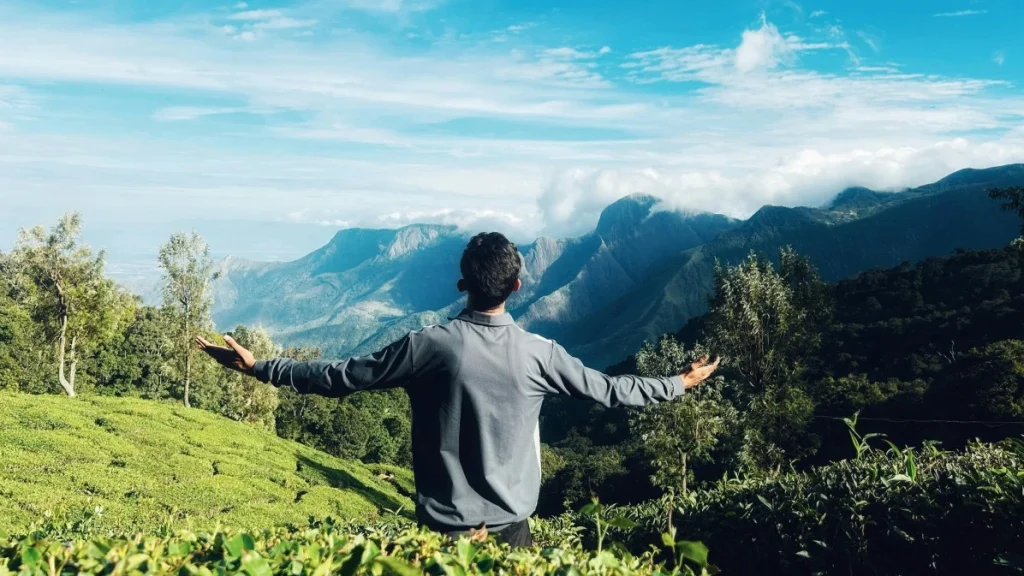
Welcome to Kerala — where emerald waters, misty tea estates, and golden beaches match a kaleidoscope of vibrant traditions. Whether you are looking for honeymoon bliss, a family vacation, or adventure by yourself, this southern Indian state will leave you with experiences that linger well beyond your stay. Creating an itinerary for a trip to Kerala may seem daunting, there will be so much to see, taste, and experience. From houseboat adventures on the calm waters of Alleppey to the rolling hills of tea plantations in Munnar, every former part of Kerala has something special. Therefore, having an itinerary for Kerala will ensure you get the most out of your trip. If you want a travel experience dedicated to local culture, responsible tourism and where local-style accommodations are prioritized, The Tarzan Way program is a great first step to explore authentic Kerala travel programs suited to various traveler types. Understanding Kerala – Geography, Climate & Culture Kerala is situated as a green ribbon along the Arabian Sea and Western Ghats that boasts remarkable variations in climate and experience. It falls in a tropical climate region and has two monsoons – the active Southwest monsoon from June to September and the less active Northeast monsoon from October to December. The best time to visit Kerala is between September and March when the climate is pleasantly cool and perfect for visiting beaches, hill stations, and backwaters. Kerala is culturally rich and colorful; festivals like Onam and Thrissur Pooram have fantastic rituals, performing arts and food. You also see remnants of ancient traditions in Kathakali dance, temple rituals and the friendliness of the people. Pro Tip: Visit during the winter months for mild weather and festive celebrations that truly bring Kerala to life. Choosing Your Kerala Itinerary Designing your Kerala itinerary depends on what you love most — relaxation, nature, adventure, or culture. Here’s a quick idea to get started: 4 to 5 Days: Kochi → Munnar → Alleppey 7 to 8 Days: Kochi → Munnar → Thekkady → Alleppey → Kovalam 10 Days or More: Add Wayanad, Varkala, or Bekal for offbeat experiences If you enjoy scenic drives and hidden gems, take inspiration from the Kerala Road Trip Itinerary, which covers scenic routes and local secrets. Pro Tip: Combine a hill station, a backwater stay, and a beach destination for a balanced Kerala trip. Where to Stay in Kerala Accommodation in Kerala varies as much as its geography. There are heritage mansions, floating houseboats, and treehouses up in the jungle canopy. 1. Luxury Resorts and Ayurvedic Retreats Kerala has some outstanding resorts, offering Ayurvedic treatment, infinity pools, and villas overlooking the ocean. These resorts are perfect for relaxation and recharging after a long day of exploring. For more detail, visit the guide about where to stay in Kerala for a relaxing Ayurvedic staycation. 2. Heritage Hotels Transformed palaces and old colonial bungalows provide the opportunity to experience Kerala’s architecture and history firsthand. Staying in one is like stepping back in time. 3. Houseboats A classic Kerala experience, it is magic to be on a traditional kettuvallam (houseboat) and cruising through the Alleppey or Kumarakom backwaters. 4. Homestays Stay in a homestay where you will have a unique experience of seeing daily life up close. Staying with a local family, you can share a meal, stories, and humor, something you will not receive in a hotel. 5. Eco-Lodges and Treehouses For a unique experience, stay in an eco-lodge or treehouse overlooking misty forests in Wayanad or Thekkady. Pro Tip: Book in advance, especially during December to February when Kerala sees its highest tourist footfall. Getting Around Kerala Kerala’s transport network makes traveling between towns and cities convenient. By Train: One of the most scenic ways to travel, especially along the coast or through the Western Ghats. By Bus: KSRTC and private buses connect even remote areas. Great for budget travelers. By Car: Ideal for flexibility — you can stop at spice gardens, roadside cafes, and waterfalls along the way. By Ferry: In regions like Alleppey, Kollam, or Kochi, ferries and boats aren’t just scenic but practical. Many travelers enjoy exploring Kerala through scenic drives or cycling trails. You can take cues from local explorers in The Tarzan Way’s Kerala itineraries to find offbeat travel routes and community-based tours. Pro Tip: For short distances, auto-rickshaws are affordable and a fun way to experience the local vibe. Kerala Cuisine to Try The cuisine of Kerala represents its geography; coconut groves, spice plantations, and fish-rich coasts. Each region has its own slightly different flavors. Dishes to try include Appam with stew, Kerala Sadya, Karimeen Pollichathu (pearl spot fish), Puttu with Kadala curry, and beef fry. As a snack, banana chips and jackfruit chips are also addictive. The state’s food culture blends with its festivals and traditions. You can dive deeper into this through the article on Top Cultural Experiences to Have in Kerala – Festivals & Food. Pro Tip: Try eating on a banana leaf at least once — it’s an authentic and eco-friendly Kerala tradition. Packing Smart for Kerala Kerala has a climate that is hot and tropical, so bring lightweight and breathable clothing, cotton or linen clothing, comfortable footwear, a hat, and sunscreen. If you travel to the hill station areas of Munnar or Wayanad, take along a light jacket for cool evenings. If you are visiting during the monsoon season a raincoat or umbrella is required. It is also a good idea to carry a small first-aid kit, garbage, mosquito repellent, and possibly your travel documents. Kerala is a modern society and very connected but having the essentials on hand will make for a more leisurely experience. Pro Tip: Pack a reusable water bottle and avoid single-use plastics to travel sustainably. Cultural Etiquette & Local Customs Kerala’s charm lies not just in its beauty but in its traditions. Respecting local customs enhances your travel experience. Dress modestly when visiting temples or rural areas. Use your right hand for eating and handing items.
Srinagar Travel Guide: The Jewel of Kashmir
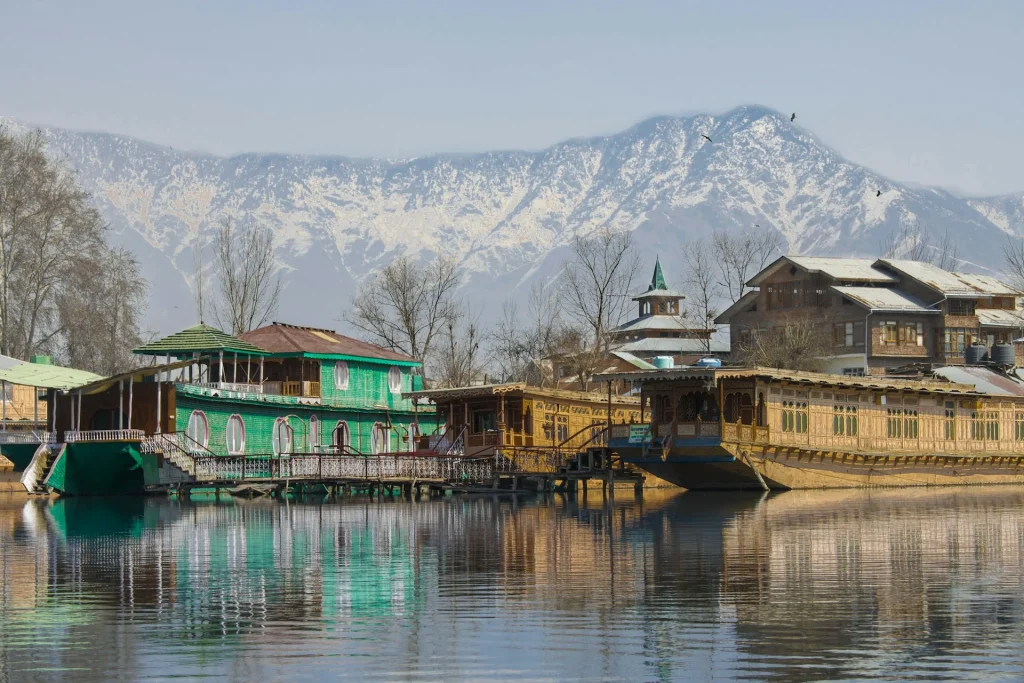
Some places in the world are more than just places to visit; they are feelings. One of these places is Srinagar. The Pir Panjal range’s beautiful, snow-covered peaks surround this city, making it feel like a real-life paradise. It was so beautiful that it looked like a painting when I first saw Dal Lake. Anyone who loves nature, is interested in history, or just wants some peace and quiet will love Srinagar. Welcome to Jammu and Kashmir’s summer capital, a city with a perfect mix of natural beauty, rich culture, and a sense of peace that you can’t find anywhere else. Srinagar is a place that will please your senses and calm your soul. The soft sound of a shikara gliding across the calm Dal Lake and the smell of the old Mughal gardens are two examples. This isn’t just a list of things to do; it’s everything you need to know to enjoy the beauty of Srinagar. We’ll go on a trip together through its famous waterways, learn about its imperial past, and taste the amazing flavors of its local food. Let’s go on an adventure to see how magical Srinagar is and make memories that will last a lifetime. 1. Find out what makes Srinagar tick: The Dal Lake That Never Ends Credit: Unsplash The beautiful Dal Lake is the most famous and loved place in the middle of Srinagar. This big lake in the city is more than just a body of water; it’s the city’s beating heart. The big mountains and lush greenery that surround this place make the air here very peaceful and beautiful. Why You’ll Never Forget This Experience: The View: The view is just beautiful. The water is still and looks like a mirror, showing the changing colors of the sky and the sharp peaks of the mountains. This makes a picture of perfect harmony. The Beat of Life: There are floating markets, houses, and even whole communities that live on the lake’s surface. It’s a fascinating look at a different way of living. Things You Must Do: Take a Shikara ride: This is the most common thing to do in Srinagar. A shikara is a traditional wooden boat with a bright canopy. Imagine this: you’re lying on soft cushions while the shikara wallah, your boatman, gently paddles you across the lake. There is no wind, and the only sound is the soft dip of his heart-shaped paddle in the water. It feels like magic, especially at dawn or dusk. To really enjoy the Floating Vegetable Market, you have to get up before dawn. In the early morning, local farmers get together in their boats to sell fresh food at a busy, floating wholesale market. It’s a photographer’s dream because there are so many people and colors. Go to the Floating Gardens: People in the area call them “Rad.” People grow tomatoes, cucumbers, and melons on the surface of the lake on these cleverly woven mats of plants. Pro Tip: Before you get in a shikara, make sure you agree on how long the ride will last and how much it will cost. You have to leave your hotel or houseboat by 5 AM at the latest to see the real action at the floating market. 2. Go Back in Time: The Mughal Gardens Are Beautiful Credit: Unsplash The Mughal gardens in Srinagar are a beautiful reminder of how long and interesting the city has been around. The Mughal emperors thought that Kashmir was their earthly paradise, so they made these beautiful gardens. They are the perfect combination of Persian style and the natural beauty of the Himalayas. Why You Should Go: The Beauty of Architecture: These gardens are great examples of Mughal landscape architecture because they have terraced lawns, cascading fountains, and channels of running water. They were supposed to look like heaven in Islam. A lot of colors: The gardens are a treat for the eyes because they are full of beautiful flowers, big Chinar trees, and well-kept lawns. Three Gardens You Should Visit: The biggest and most well-known garden is the Shalimar Bagh. The emperor Jahangir made it for his wife Nur Jahan. The pavilions and water channels are so pretty. The “Garden of Joy,” Nishat Bagh, has 12 terraces that each represent one of the 12 signs of the zodiac. There is a great view of Dal Lake from it. Chashme Shahi: The “Royal Spring” is the smallest of the three. People think that the natural spring there can heal them. Pro Tip: The Mughal Gardens are best visited in the spring (April-May), when the flowers are in full bloom, or in the fall (October-November), when the leaves of the Chinar trees turn a bright red and gold. 3. Live on the Water: The Unique Experience of Staying on a Houseboat Credit: Unsplash Staying on a traditional houseboat is one of the most interesting and romantic things you can do in Srinagar. These wooden boats are tied up along the calm shores of Dal Lake and Nigeen Lake. They offer a stay that is both very quiet and very nice. What Makes It Unique: Luxury and Comfort: Don’t be fooled by the word “boat.” These houseboats are like small hotels that float. They have everything you could want, like soft carpets, wooden furniture with detailed carvings, modern bathrooms, and sometimes even a private deck. Stunning Views: You’ll never forget waking up to a view of the calm lake and the mountains around it, with the soft sound of water lapping against the boat. Hospitality that is made just for you: Families often run houseboats, and the service is friendly and personal. You will be treated like a VIP. Pro Tip: Nigeen Lake is a quieter and smaller part of Dal Lake. You might want to book a stay on Nigeen Lake instead if you want to stay on a houseboat that is quieter and less touristy. 4. Take care of your taste buds: The Flavors of Kashmiri Food
AI Technology and Travel: How it’s Changing the Way We Explore India

The development of AI (Artificial Intelligence) technology has drastically changed several industries, including travel, in the current digital era. The way we explore India is one area in which AI is having a significant impact. AI is transforming the travel experience, opening up new options and enriching our experiences in previously inconceivable ways. Examples include personalized trip recommendations and intelligent virtual tour guides. In this blog, we will explore the fascinating ways artificial intelligence (AI) technology is transforming the travel industry in India and enabling visitors to explore and fully immerse themselves in the nation. Travellers’ individual requirements and preferences are catered to by a variety of cutting-edge applications and services that have emerged as a result of the fusion of AI and travel. AI technology is enabling tourists to experience India like never before, from customised trip recommendations and knowledgeable virtual tour guides to seamless language translation and augmented reality experiences. In this blog, we’ll explore the fascinating ways AI is transforming the travel industry in India, facilitating the discovery of its beauties and empowering visitors to make lifelong experiences. India is a nation with many different cultures, languages, and topographies. It is a country with both age-old customs and contemporary advancements. The way we explore India is changing as a result of the quick development of technology. Artificial intelligence (AI) is one of the most important technical developments that has had an impact on the tourism business. India’s tourism industry is changing because to AI technology, which makes it simpler for tourists to plan their visits, find their way around unfamiliar places, and get a taste of this intriguing nation’s culture. Personalized Recommendations In order to provide smarter recommendations and more individualised experiences, AI algorithms are continuously learning from user preferences, behaviour, and feedback. Utilising this technology, travel platforms provide individualised recommendations for activities, lodging, food, and other services based on user interests and preferences. AI is revolutionising how tourists explore India, enabling them to find hidden gems and make lifelong memories. It does this by recommending off-the-beaten-path locations, genuine local experiences, or specialised activities The capacity to offer individualised recommendations is one of the most important advantages of AI technology in the tourism industry. To make personalised recommendations for lodging, activities, and restaurants, AI systems examine user interests and behaviour. Travellers can now receive recommendations that are specifically tailored to their interests, spending capacity, and travel preferences. For instance, machine learning is used by AI-powered recommendation systems like The Tarzan Way to provide consumers personalised trip plans. To provide personalised travel itineraries, these services examine user data, including search history, booking trends, and travel preferences. By giving them recommendations that are based on their needs, this not only saves travellers time but also improves their trip experiences. Intelligent Itinerary Creation The way we arrange our travel is also changing as a result of AI. AI algorithms are increasingly being used for intelligent itinerary building. Based on the choices, interests, and limits of the user, these algorithms generate optimised travel plans. For dynamic itinerary changes, they can also include real-time data. Our product, The Tarzan Way, employs AI algorithms to produce custom trip plans for individuals. To design an itinerary that is best suited to the user’s requirements, we consider variables including travel time, distance, and price. By giving them a well-planned schedule, this not only saves travellers time but also enables them to make the most of their trip. Smart Accommodation and Transport Suggestions The way we travel in India is also changing as a result of AI-powered apps for locating the finest lodging and transit choices. These technologies make it simpler for travellers to locate the best offers on lodging and transportation by using machine learning to forecast pricing trends and availability. Our platform uses AI technology to offer consumers helpful travel and lodging suggestions. Numerous platforms employ AI algorithms to optimise routes and give users the most cost-effective transportation options, as well as machine learning to forecast hotel room demand and change prices. Language and Cultural Assistance India is renowned for having a wide variety of languages spoken throughout the nation. Travellers who may not be fluent in the local languages can communicate with one another thanks to AI-powered language translation technology. Instant translation of text, signs, and even spoken phrases is possible with the help of mobile apps and gadgets with AI translation skills. This makes it possible to communicate with locals easily, read menus, and comprehend critical information. Travellers now have more opportunities to interact authentically with Indian culture, people, and heritage thanks to this advancement in AI technology. Tools for language interpretation and translation powered by AI are also revolutionising how we discover India. These resources support cross-cultural understanding and assist travellers in overcoming language obstacles. Travellers can get real-time language translation through websites like Google Translate and iTranslate. These technologies make it simple for visitors to interact with locals, read signage, and find their way around unfamiliar places. Additionally, they offer etiquette advice and cross-cultural counselling to help visitors better grasp the cultural customs of the areas they visit. AI-Enabled Travel Safety and Security Additionally, AI technology is significantly increasing traveller security and safety in India. Artificial intelligence (AI)-powered solutions are enhancing security measures and enhancing the whole travel experience, from facial recognition systems at airports to smart monitoring systems in public settings. AI systems can also examine data trends to find anomalies or potential threats, generating early alerts and aiding in crisis management. Travellers can experience more peace of mind by utilising AI technology since they will know that their security and safety are top priorities. AI technology is increasing travel security and safety. Travel risk assessment is being done using predictive analytics and machine learning, and real-time monitoring of travel advisories and safety alerts is becoming increasingly prevalent. Travellers can get up-to-date safety and security information from websites
Mindful Travel: A Guide to Slow and Sustainable Travel in India
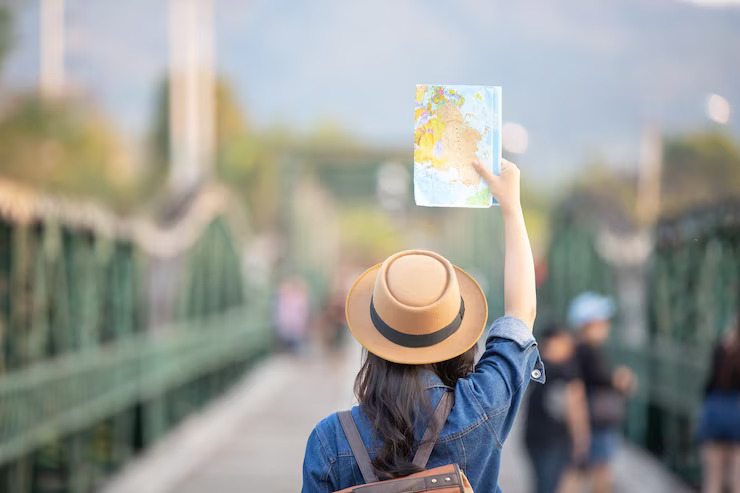
Introduction: In a world filled with fast-paced travel itineraries and overcrowded tourist attractions, there is a growing movement towards a more mindful and sustainable approach to travel. Mindful travel encourages us to slow down, immerse ourselves in the local culture, and have a positive impact on the places we visit. With its rich heritage, diverse landscapes, and vibrant communities, India offers a perfect canvas for mindful travel experiences. This guide aims to introduce you to the concept of mindful travel and provide insights into how you can embark on a slow and sustainable journey through India. By embracing mindfulness, we can cultivate a deeper connection with the destinations we explore, interact with local communities respectfully, and minimize our environmental footprint. From experiencing ancient traditions in spiritual hubs like Varanasi and Rishikesh to exploring off-the-beaten-path destinations like Hampi and Mawlynnong, we will delve into the beauty of India’s diverse regions and offer suggestions for immersive and sustainable activities. By practicing mindful travel, we can create meaningful memories, support local economies, and contribute to the preservation of India’s cultural and natural heritage. So, let’s embark on a journey that nourishes the soul and leaves a positive impact on the world around us. Understanding Mindful and Sustainable Travel Mindful and sustainable travel goes beyond merely visiting popular tourist attractions and ticking off items on a checklist. It is an approach that emphasizes connecting with the local culture, minimizing environmental impact, and supporting local communities. By practicing mindful travel, we can foster a deeper understanding and appreciation of the destinations we visit while leaving a positive legacy for future generations. Mindful travel encourages us to slow down, be present at the moment, and engage with our surroundings. It involves immersing ourselves in local traditions, trying authentic cuisine, and interacting with local communities in a respectful and meaningful way. This may include participating in cultural activities, volunteering for local initiatives, or supporting local artisans and businesses. Sustainable travel focuses on reducing our ecological footprint and preserving the natural environment. This can be achieved by choosing eco-friendly accommodations, opting for public transportation or cycling instead of relying on private vehicles, and practicing responsible waste management. It also involves respecting wildlife and natural habitats, refraining from activities that exploit animals, and supporting conservation efforts. In India, mindful and sustainable travel can take various forms. It can mean exploring rural villages and promoting community-based tourism, engaging in eco-trekking and wildlife conservation activities or supporting local artisans and craftspeople. By embracing these principles, we can ensure that our travel experiences in India are not only enriching for ourselves but also contribute positively to the cultural, social, and environmental fabric of the country. Research and Planning Research and planning are essential for a mindful and sustainable travel experience in India. Here are some key steps to undertake: Destination Research: Begin by researching different destinations in India that align with your interests and values. Look for places that offer opportunities for cultural immersion, sustainable activities, and eco-friendly accommodations. Consider the environmental and social impact of tourism in the area and choose destinations that promote responsible tourism practices. Local Culture and Customs: Familiarize yourself with the local culture, traditions, and customs of the places you plan to visit. This will enable you to respect and appreciate the local way of life and mindfully interact with the community. Learn a few basic phrases in the local language to communicate and connect with the locals. Sustainable Accommodation: Look for accommodations that prioritize sustainability, such as eco-lodges, homestays, or hotels with green certifications. Check if they have initiatives in place to conserve energy and water, minimize waste, support the local economy, and preserve the natural environment. Consider staying in locally-owned establishments to contribute directly to the community. Transportation: Choose sustainable transportation options to minimize your carbon footprint. Whenever possible, opt for public transportation, walk, or cycle to explore the destinations. If long distances need to be covered, consider taking trains instead of flights as they are more eco-friendly. Responsible Activities: Engage in activities that promote sustainability and respect for local resources. Support local artisans and businesses by purchasing locally-made souvenirs and handicrafts. Be mindful of wildlife encounters and choose responsible wildlife tourism options that prioritize animal welfare and conservation. Waste Management: Be conscious of your waste generation and practice responsible waste management. Minimize the use of single-use plastics, carry a reusable water bottle and shopping bag, and dispose of waste properly in designated bins. Respect for Nature: Respect the natural environment and wildlife by following designated trails, not disturbing flora and fauna, and adhering to responsible ecotourism practices. Avoid activities that exploit animals or contribute to habitat degradation. Engage with Local Communities: Interact with local communities in a respectful and meaningful way. Learn about their traditions, support local initiatives and social enterprises, and engage in community-based tourism activities. Respect local customs, dress codes, and etiquette. By conducting thorough research and planning, you can ensure that your travel experiences in India are mindful and sustainable, and leave a positive impact on the environment and local communities. Engaging with Local Communities Engaging with local communities is a key aspect of mindful and sustainable travel in India. It not only enriches your travel experience but also promotes cultural exchange, fosters mutual understanding, and supports the local economy. Here’s why engaging with local communities is significant and some responsible ways to do so: Cultural Exchange: Interacting with locals allows you to gain a deeper insight into their way of life, traditions, and customs. It promotes a mutual exchange of knowledge, ideas, and perspectives, fostering cultural understanding and appreciation. It can also challenge preconceived notions and stereotypes, promoting a more inclusive and tolerant mindset. Respect and Sensitivity: When engaging with locals, it is important to respect their traditions, customs, and social norms. Observe and follow appropriate behavior, dress modestly if required, and be mindful of local sensitivities. Show genuine interest in their culture, ask questions respectfully, and be open to learning from their experiences. Learning from Locals: Locals
The Ultimate Travel Guide to Ladakh in 2022
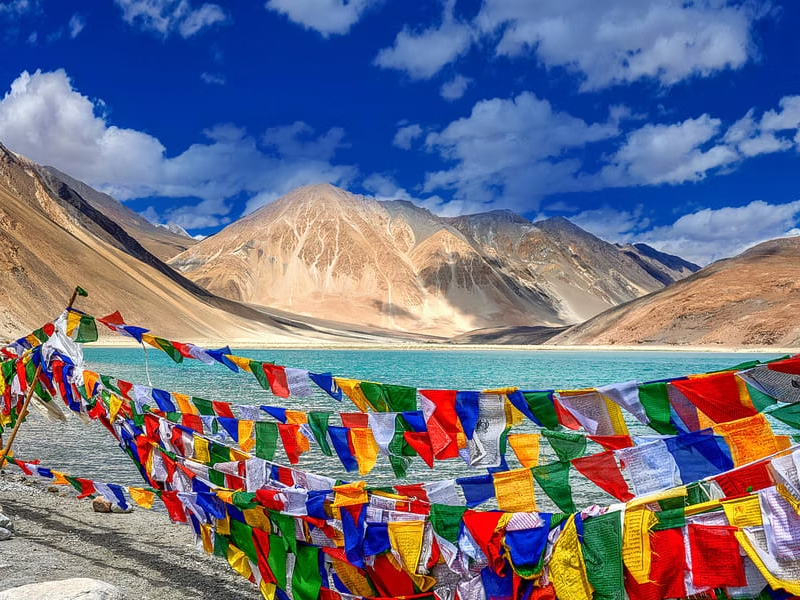
Known as the ‘Land of High Passes’, tucked away in the confines of the Kunlun Mountains and the Himalayas, Ladakh is a natural wonder. Considered to be one of the most beautiful regions in India, Ladakh is clothed in glory with barren cold desert, snow-draped mountains, quaint gompas, striking blue water bodies, multi-colored flags fluttering in the air, and sightings of Bactrian camels traversing the deserts. It is spectacularly an embodiment of all things beautiful and serene. The remoteness of the region coupled with rocky terrains of mountains and cold air breezing through is what makes Ladakh a perfect place for anyone seeking to experience some time away from the ordinary and revel in the extraordinary. A haven for adventure enthusiasts, the entire length of Ladakh is brimming with things to do, and places to visit and explore. Here is a list of guides you might want to consider before you plan your trip to Ladakh: Best Time to Visit Ladakh: When to go? The most ideal time to visit Ladakh would be in the summer months from June to September. The roads of the Srinagar Leh highway and Leh-Manali highway open up by May to mid-July and hence serves as the perfect time to plan a road trip along this famous and magnificent road. The roads are also open during the monsoon months from end-July to August but the sludge on the highway proves to be very challenging. By October, the roads are closed off from the world due to heavy snowfall. The only way to reach the place is by flight. But winter in Ladakh is very mesmerizing and an experience to cherish for a lifetime. How to reach Ladakh? By Air: The Kushok Bakula Rimpochee Airport in Leh is the best option to reach Ladakh. It is well connected to other major cities of India. Flight bookings are available throughout the year. By Train: Ladakh does not have a functioning railway station. However, the closest train station is Jammu Tawi in the city of Jammu. You can hire a taxi or bus to reach Ladakh from here on. By Road: The road network in Ladakh is well connected to other major cities of India. However, the roads are only open for six months of the year, and from November to April, the roads are closed due to heavy snowfall. However, the Delhi-Manali-Leh highway and Delhi-Srinagar-Ladakh routes are famous for their captivating views which makes for a memorable road trip. Places to Visit in Ladakh: Where to go? God has blessed Ladakh with some of the most beautiful and magnificent places on earth. Whether it is a long trek or a short trip, there are many places where you can visit and enjoy the natural beauty of Ladakh. These places are the perfect getaway to rejuvenate your soul. For the uninitiated, these places are some of the best places to visit in Ladakh. 1. Nubra Valley Credit: Getty Images One of the most beautiful destinations in Leh, Ladakh, Nubra valley is a gem waiting to be explored. From aged old monasteries to bountiful orchards, this region of Leh, Ladakh is sandwiched between Kashmir and Tibet. The breathtaking view of the valley where sights of dunes coupled with herds of Bactrian camels can be witnessed is what makes Nubra Valley even more appealing. 2. Zanskar Valley Credit: Trek and Trails An enchanting semi-desert region in Kargil, Ladakh, Zanskar Valley is truly a work of art. The sparkling clean rivers, snow-capped mountains, enthralling landscapes, and pleasant weather serve as a perfect destination to escape the hectic reality and relish in the best of nature. The mountain range of Zanskar is part of the Tethys Himalayas hence it offers a spellbinding view into the panoramic trans Himalayan region. 3. Pangong Lake Credit: Jagran Josh Pangong Lake or Pangong Tso is one of the most significant tourist attractions in Ladakh. Located at a height of almost 4,350 meters above sea level, it is said to be one of the highest altitude lakes in Ladakh. A beautiful water body so blue and serene that captivates anyone that visits the place, Pangong Lake also serves as a photographer’s paradise. The tall mountains surrounding the lake, ducks wandering on the banks, colored flags swaying in the wind, and the clear blue sky all add to the charm of the lake. 4. Tso Moriri Credit: Himachal Watcher An emerald lake known for its spellbinding beauty, Tso Moriri is a must-visit place in Ladakh. The sheer beauty of this lake combined with the vast expanse of the blue sky and the tall barren mountains as the backdrop with marshlands and wetlands around the lake makes the entire length of Tso Moriri majestic. Though lesser known than Pangong Lake, Tso Moriri rightfully stands as a tourist favorite for offering nothing but the best to its visitors. Things to do in Ladakh: What to do? If you are planning a vacation to India, you should know that the main attraction is Ladakh. There is a lot of beauty and adventure to be found in this region. This section enlists all the things you can do on your Ladakh trip. 1. Chadar Trek A thrilling and possibly one of the most exhilarating trekking experiences over the frozen ice carpet of the Zanskar river. Loved by adventure enthusiasts for its taxing yet exciting route, the trek is very strenuous and daunting even for experienced trekkers. The temperature drops below sub-sub-zeroes. Regardless of the difficulty, the nights spent in caves, sightings of exotic wildlife, traversing across frozen rivers with sparkling blue water flowing in gaps, and walking along the barren yet majestic mountains are what make this trek an experience to treasure for a lifetime. 2. Bactrian Camel Safari A famous fun and adventurous activity that can be experienced in
Spiti Valley Checklist: 15+ Tips So You Don’t Get Tricked
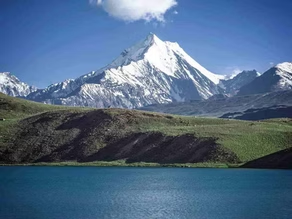
Whenever going to a new destination for a holiday or a weekend getaway, a lot of people tell you what to see there or what to taste or where to buy, or where to stay. But nobody really tells you about how to save yourself from spending money when it isn’t needed, or from people who might trick you, or things that you might have found for cheap from a different shop. All they ever do is make you regret it then, by saying,” Oh ho! You could have bought it from that shop instead of this one. That shop offers the best quality products at a better price.” And the regret that haunts you for life at times is the worst. Spiti in Summers. (Photo by Spiti Adventure) When planning a trip to a place that you haven’t visited before, it becomes a nightmare thinking about every possible way that it might go wrong. And when someone gives you some tips which help you ease the tension, it is just a blessing. And like any other place, Spiti Valley has its fair share of tricksters that may thug you for extra money. Spiti Valley in Winters. (Photo by Devil on Wheels) So here are some tips for you to follow to make your trip a tension-free one and not something that you’ll regret later. Check for availability/ permissions Health certificates required Documents required The acclimatization issues A no-network zone Emergency calls only The best month to visit The colder, the better. Time for some showers from heaven A longer stay Stock up money Fossils everywhere but no fuel? The adrenaline rushes What to take and what not to take. That is the question. Some new friends Local guide to be an expert Spiti Valley Checklist: 15+ Items 1. Check for availability/ permissions Do carry your driver’s license, Aadhar Card, or any other identification card to have a smooth trip. As the place is near the Tibetan outskirts, some places do require certain permissions. 2. Health certificates required Some places, where trekking is involved, require health certificates. 3. Documents required Do carry your driver’s license, Aadhar Card, or any other identification cards to have a smooth trip. 4. The acclimatization issues Spiti Valley is situated at a height of 3300 meters and hence requires each explorer to have significant acclimatization as going on such a height, especially for a person who lives in the plains or coastal areas, might become risky. It is usually advised to influence your adventure gradually, either by starting from Shimla or Manali. Those with lung or heart conditions should consult their specialist before planning the trip. 5. A no-network zone Due to the location of Spiti Valley at such a high altitude, there is almost no to zero phone network. Sims like BSNL and MTNL do work and hence it is always advised to take them for your trip to Spiti. Even then, during the winters, as the network poles might get covered with snow, the connectivity drops to zero. 6. Emergency calls only You can also use satellite phones at 2rs per minute at STD booths at Batal and Mudh villages for emergency calls. 7. The best month to visit Visit during the summer months from April to September as the cold is quite bearable and all the roads are open. The valley is picturesque, lush green, and beautiful to look at. 8. The colder, the better. The winters are very harsh and the valley looks like a cold dessert that is covered with snow from all sides. You can definitely visit if you are a fan of cold climates. Though you must keep in mind the extreme winters, (at times) closed roads, and a lot of closed tourist places. 9. Time for some showers from heaven If traveling during the monsoon season, be prepared for landslides, roadblocks, and overflowing rivers. The water from the rivers sometimes flows towards the roads, making it difficult to drive. Carry rain-appropriate clothes and luggage like rain jackets, water-repellent clothes, and open footwear like crocs or rain boots. 10. A longer stay As the weather is pretty surprising, especially during the monsoons and winters, do keep some buffer days as the roadblocks, landslides, snow, etc may extend your trip than you had originally planned. 11. Stock up money The availability of ATMs is pretty rare as you may only find them at Kaza. So, stock up on enough cash which lasts you throughout the trip. 12. Fossils everywhere but no fuel? Another rare sighting in Spiti Valley is the petrol pump. The only available petrol pump is in Kaza, so, fill your tanks enough to make your trip an easier one. 13. The adrenaline rushes Don’t plan a trekking trip out of peer pressure or the adrenaline rush, as some of the treks are extremely difficult for even experienced people. Keep in mind your stamina and health before going on a trek. 14. What to take and what not to take. That is the question. As some villages like Langza Village have an abundant number of marine fossils, as the village came into existence when the Tethys Sea dried up. Even though the fossils look very attractive, you must remember not to take them with you as this disturbs the natural balance of the place. At the same time, beware of the local people selling your fossils. Though it is always advised not to take the real fossils home in any form (bought or found), there may be people selling you replicas made of clay, in the name of real fossils, and that too, at a much higher price. While it is okay to buy replicas, do make sure that you are buying them from an



